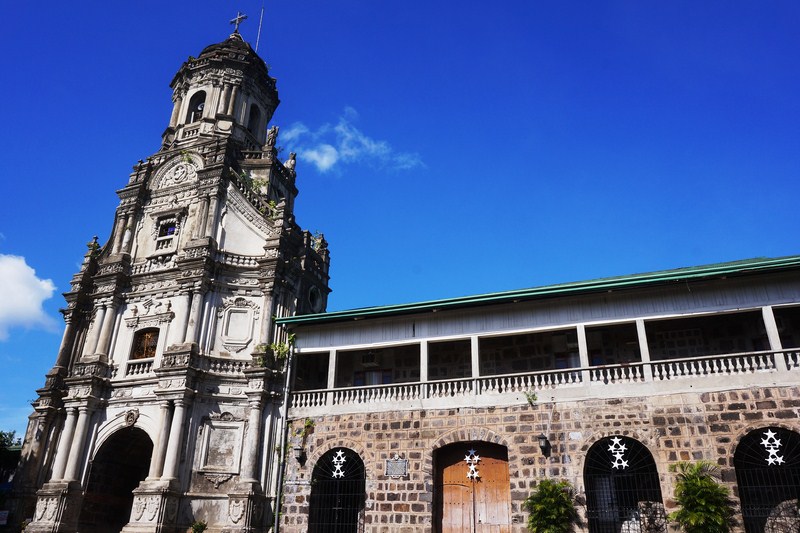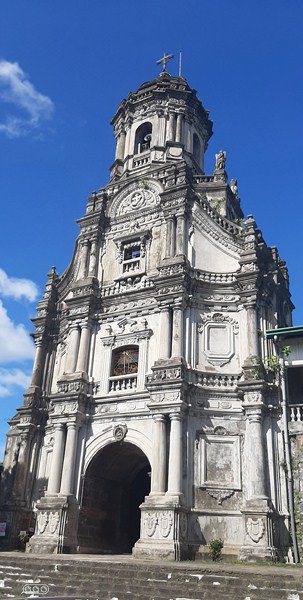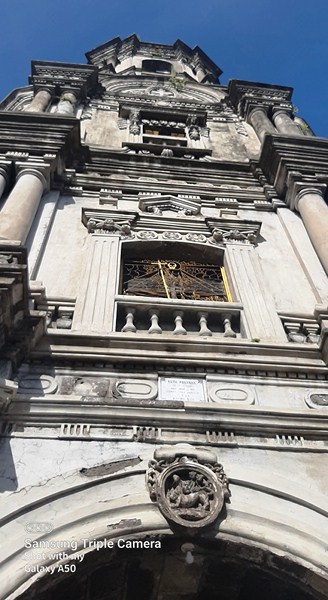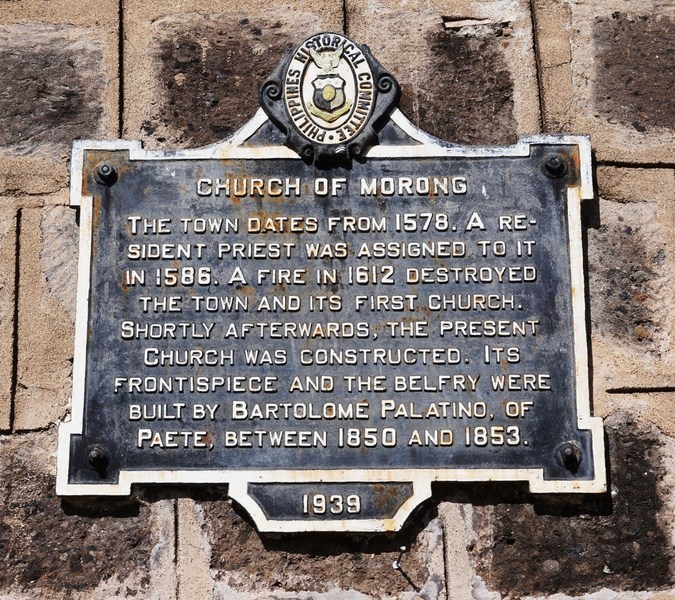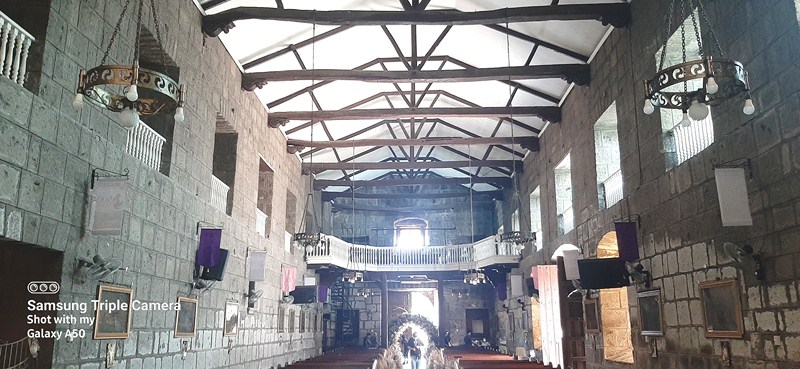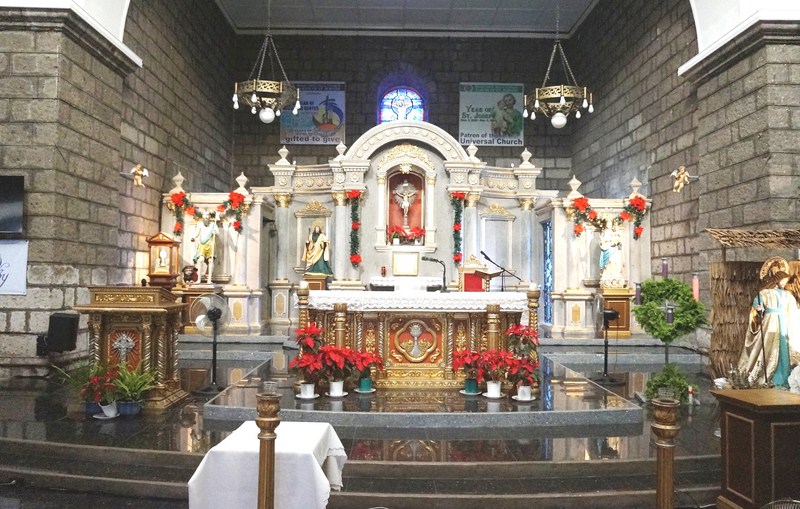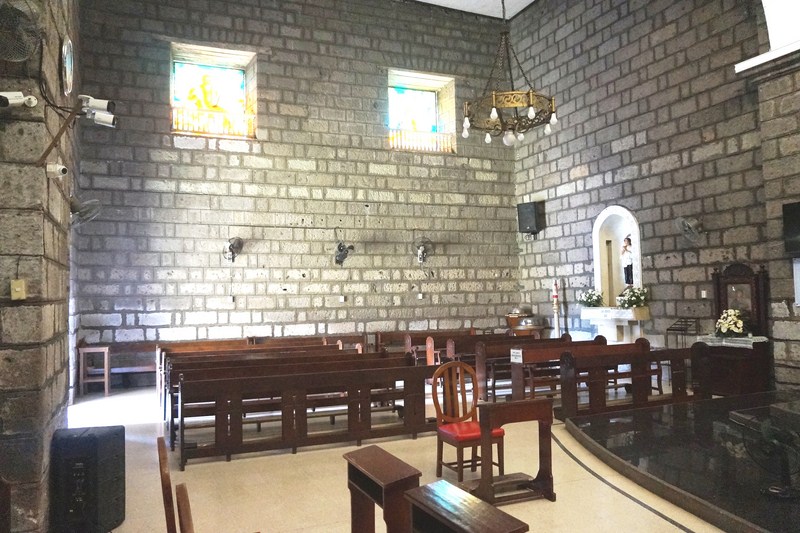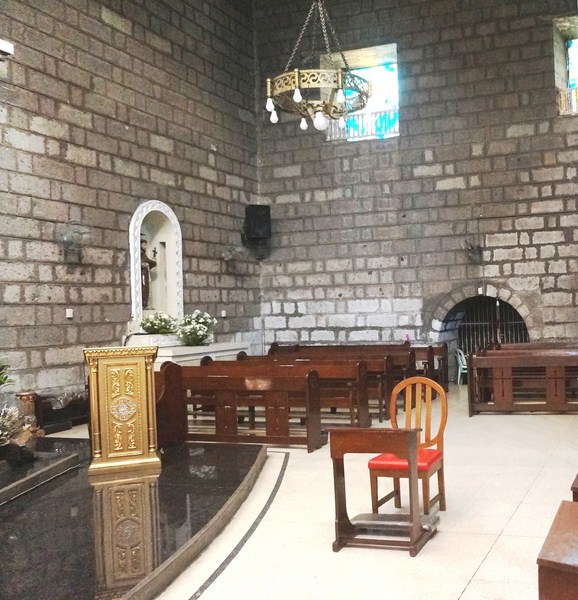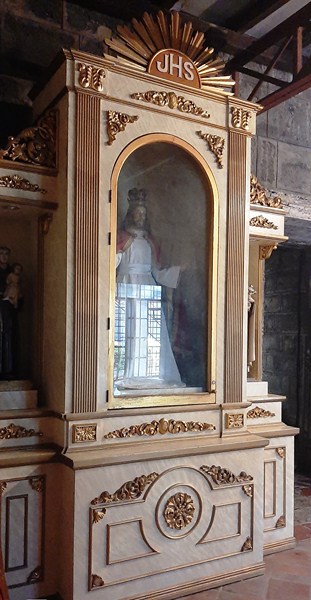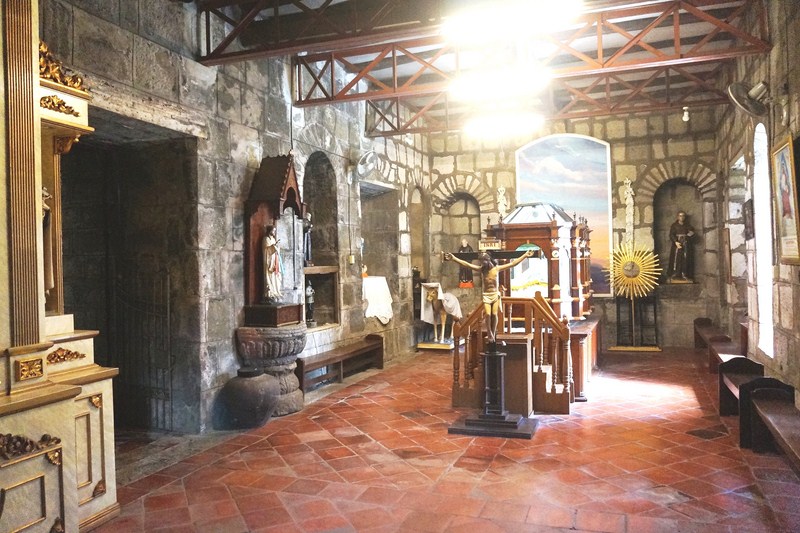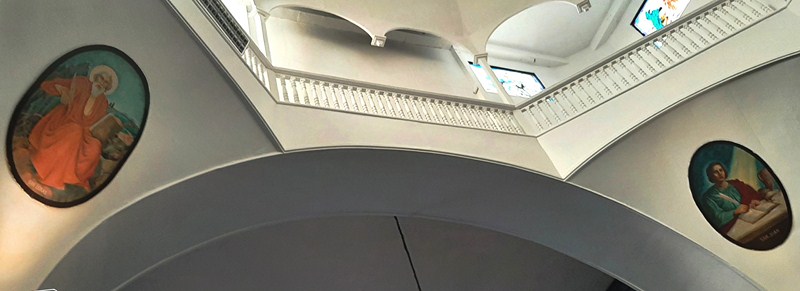This intricately-designed church, dedicated to St. Jerome (patron of scholars of the Bible, this saint translated the Bible), is one of the splendid examples of tropical Baroque architecture (more properly described as Baroque Revival architecture) in the Philippines, with its unique bell tower shape and finely detailed façade with fanciful balusters, large pillars and carved stone ornaments. It is a favorite subject for photographers and a lovely backdrop for weddings and selfies.
It was first built in wood by Franciscan friars in 1612 opposite of its present location, on the south bank of the river. After it was destroyed by fire together with a large part of the pueblo in 1612, it was rebuilt, on elevated ground at the opposite bank of Morong River (which ensured its safety from floods and fires) from 1615 to 1620 by Fr. Blas de la Madre with stone and mortar.
Stones were quarried from a hill called Kay Ngaya; lime from the stones of the mountain Kay Maputi; and sand and gravel from Morong River. Measuring 42 varas long by 12 varas wide, the church had a single nave with a semicircular apse, built under the direction of Chinese master craftsmen.
In 1850, Fr. Maximo Rico commissioned Don Bartolome de Palatino, a native of Paete, to renovate the facade and build the four-storey, 30 m. (100-ft.) high octagonal bell tower. Completed on February 2, 1853, the new Baroque façade, designed by Severo Sacramento, had a towering height of 20 varas. During the Philippine Revolution, Spanish casadores and other loyal civil guards were besieged in the church and convent, finally surrendering to the Katipuneros on August 19, 1898.
The central portion of the elaborate, exquisitely carved and frequently photographed three-storey Baroque façade, one of the most striking of all church facades along Laguna de Bay, surges outward and the catenated balustrade above gives the whole a dynamic feeling.
It has superpositioned Doric columns, a semicircular arched main entrance and an elaborately decorated segmental pediment with carved cornice and tympanum. Horizontal string courses with decorative moldings and balustrades identify each level. Various decorative elements, some Mexican in origin, give the facade a richness characteristic of Baroque.
Chinese influence is seen at the two (a boy and a girl) Chinese lion sculptures at the entrance to the steep entrance driveway (it is 30 feet above the town). One lion, said to be the girl lion (said to have a hidden treasure inside it), was stolen between 2000 and 2005. The male lion is safeguarded at the St. Jerome school vicinity.
Above the main entrance is its landmark single bell tower (characteristic of European churches), the church’s focal point, with its statue of St. Michael the Archangel on top and ornamented with floral and scroll designs.
Four angels, representing the cardinal virtues (Prudence, Justice, Restraint and Courage), stand at the corners of the bell tower. The Franciscan coat-of-arms (indicating it was once assigned to Franciscan missionaries), the hands of Jesus and St. Francis of Assisi, is seen on the main facade of the bell tower.
The cross at its tip is illuminated at night and can be seen from the surrounding countryside. When fishing at night and during the storm, the bell tower is used by local fisher man in the nearby towns as a light house. Fr. Felix Huerta, writing in 1852, states that the facade had finials shaped as jars and shells used for illuminating it.
An added attraction in the church is the first class relic (a part of the saint’s body) given to the parish year in 2005, through the effort of then parish priest Rev. Fr. Lawrence “Larry” Paz, when they had their first pilgrimage tour to Holy Land and Vatican City.
Publicly exposed every Saturday during the anticipated mass (the kissing of the relic is done every last Saturday of the month), the relic is guarded by the knights of St. Jerome. Another much bigger relic, given, in 2007 to the parish as a gift from the main chaplain of the church of St. Jerome in Rome, is now buried on top of the table of the main altar. It is kissed by the priest every time there is a mass.
Church of St. Jerome: Turentigue St., Brgy. San Jose, Morong, Rizal. Tel: 8653-1259. View Map>>>Feast of St. Jerome: September 30.
How to Get There: Morong is located 4.5 kms. (a 2-hr., 15-min. drive), via R-6, from Manila and 26.6 kms. (a 1-hr. drive), via Sumulong Highway, from Antipolo City.

